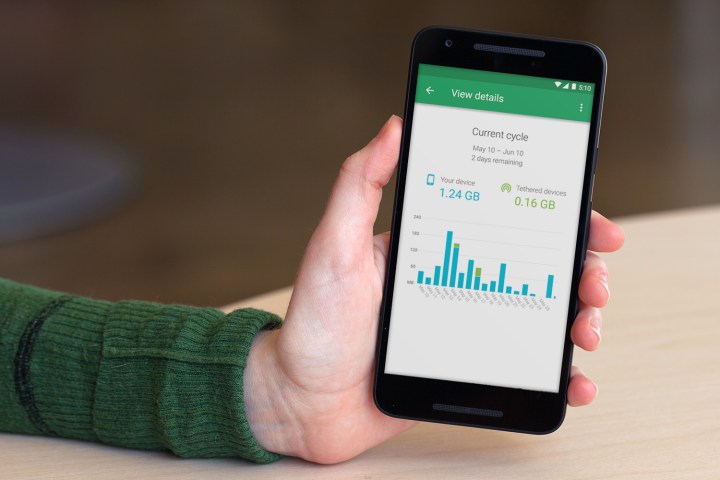
In fact, the new features are live right now — all you need to do is head to the Project Fi app. The new features require Android 7.0 or higher, however, that should not be too much of a problem considering the fact that Project Fi is limited to the Google Pixel, Pixel XL, Nexus 6P, 5X, and Nexus 6, all of which got updates to Android 7.0.
Live data reporting is available in the app’s main screen and you will be able to see data use through a widget too. That means you can be notified immediately if you happen to go over your data cap, ensuring you do not spend more money than you want on your monthly bill.
To see the per-app data breakdown, head to the Project Fi app, then hit the view details button and you will see how much data your apps have been using that month.
Project Fi has made a number of waves in the mobile industry and for good reason. Unlike other carriers, you will only pay for the data you actually use on Project Fi — that means that if you pay $20 for 2GB of data at the start of the month and only end up using 1.4GB, you will get $6 of credit to put toward next month’s bill. If you happen to exceed the amount of data you pay for, you can simply pay $10 for an extra gigabyte of data.
Editors' Recommendations
- Google Messages vs. Samsung Messages: Which app should you use?
- Google Fi: Phones, plans, pricing, perks, and more explained
- How to use Google Assistant, plus all the ‘OK, Google’ commands you need to know
- Google releases 3 more Android apps to help you spend less time on your phone
- Google Fi finally gets an unlimited data plan … but read the fine print


